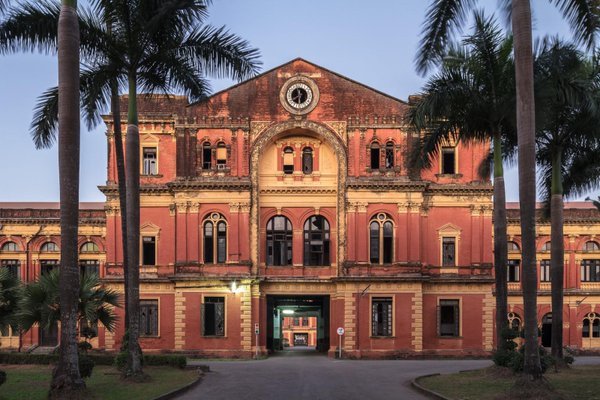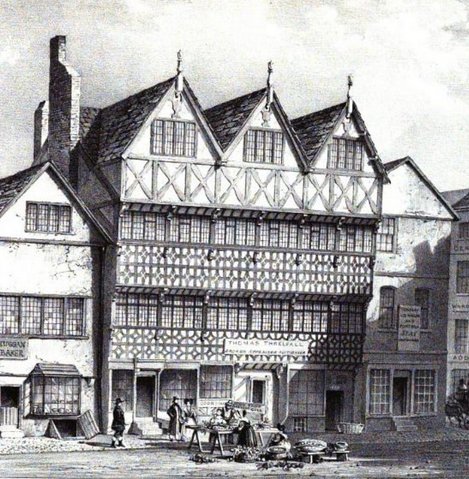Yes, it has a very video-game platformer feel to it, and it obscures the hideous freeway so
This is great, thank you. Just want to reply rather than just bloodpotion, but I don’t have much to add.
I’m currently daydreaming about a future research project about the sort of hazy intermingling of new and old ideas about scholarship in 19th early 20th century China, through a study of traditions of bibliographic and text critical scholarship. It’s obviously very far afield from any of this stuff, but I think I’m just extra sensitive to other situations in which what is seemingly “modern” has obvious antecedents in overlooked “premodern” or even medieval contexts. I think there are a lot of parallels with various aspects of the ‘enlightenment’ (and its embrace/appropriation/transformation of the ‘classical’ tradition) in fact, though it’s usually washed over in favor of a narrative that describes Chinese modernity as a function of contact with the West. Anyway. Architecture!
Oh, good. I’m glad it was helpful and not confusing/vague.
Do you know about any texts that might discuss, in any small way, the concept of the labyrinth in Chinese architecture? It’s still very hard to find good, or even any, writing on non-European/non-American architecture (histories published only last year still do the thing of consigning “ethnic” architecture to a spare chapter or two among reams of stuff about England or Rome), and I figured if anyone here might know about that it would be you.
Fictional narratives would be good too.
Some more images.
Because of this thread I took notice of some of the weirder buildings in San Antonio today. Thanks thread.
I was also reminded how the military hospital had an opulent amount of open empty space. Like hallways that were the size of a two lane road and five story ceilings. Then you would eventually enter a room and it was like you were in a shopping mall clinic.

God damn, these buildings are so cool.
Death to Robert Moses
Off the top of my head, I don’t know anything about labyrinths in China, and my best guess is that the word for labyrinth in Mandarin is a loan word from Japanese or a neologism based on the western concept. But I’ll keep my eyes peeled, it’s an interesting idea. Do you have any leads?
RE: The Beijing ban. A lot of those buildings are kind of cool or interesting, a lot of them are ugly as sin, and most of them look utterly weird amidst the rest of the city, and seem to do more to highlight the staggering income disparity issues in contemporary China than they do to improve the city for everyone. Anytime China “bans” something it is promoted as another flexing of their autocratic muscles, and when things are derided for being “xenocentric” I get kind of upset, but at the same time I’m kind of with them on this one. Pretty, daring architecture is nice, but the constant oneupmanship of who can build the weirdest, most decadent building imaginable is not a great path to be on.
edit: And lest this just be considered another conflict between the state and China’s nouveau riche, note that several of the “weird” buildings in that piece are offices for state institutions (CCTV, People’s Daily, etc)
The only thing I’ve come across are fragments from Hui Zou’s essay, “The Idea of Labyrinth in Chinese Building Tradition.”
An early encounter of Western and Chinese labyrinths took place during the late eighteenth century in the Qing imperial garden Yuanming Yuan, where the Western Jesuits built a labyrinth for Emperior Qianlong. Beginning with Daedalus’ legendary design, the labyrinth was the basis throughout Western history of a primary meaning of the built environment. With a rigorously geometrical layout, the labyrinth in Yuanming Yuan appeared exotic to the Chinese eye but was specifically named by the Chinese as a ‘garden’ because of its meandering movement similar to Chinese gardens.
[…]
The English term ‘labyrinth’ can be translated into Chinese as migong, which literally means ‘a perplexing palace.’ A palace indicates the dwelling for an emperor or immortal. A palace building is usually large and its interior is spacious. A perplexing palace can be a spatial complex where one can easily get lost and feel awed at such a loss. An imperial palace, like the Forbidden City, consists of numerous buildings and courtyards, which are enclosed by multiple tiers of walls. According to the ancient dictionary Shiming (ca. third century), a wall is intended for hiding. Enclosed by walls, an emperor separated himself from the public and appeared mystic. Comparing the imperial palace to the obscure governing institution in China, Franz Kafka vividly described the universal perplexity held by the Chinese public to administration as clouds floating above the vast land.
As someone who suffers on his parkways regularly, yeah



i like a small dwelling because it’s easier to keep clean
Getting pretty dang close to finishing the first of two articles on Boston’s new (i.e. past decade of) architecture. At first I was shooting for a single article, but the scope I wanna cover is too big to count on most people finishing it in one read. The first one’s mainly about giving some context, so in the follow up I think the emphases will be on green architecture, utopian ideals, and the public’s involvement in urban development.
Anyway, here’re some relevant twooter things I twitted today/recently

Built between 1889 and 1905, the Secretariat epitomized British rule over Myanmar (then Burma).

Strip windows on a load-bearing modular frame about 300 years before the Bauhaus.
https://twitter.com/Doshmanziari/status/707358705499697153
Photos of Boston City Hall from a couple of days ago. I went there for a talk on brutalism.






Photo tour from my walkabouts today.
Harvard Square Parking Garage. There are very nearly no photos of it online. The interior is standard garage fare, but I do like the exterior a lot. It fits in with the other brick-based buildings and the blend of classical elements with the brutalist rises on either side (housing stairs and an elevator) is fun.
View from atop the parking garage. The variety of forms that come from the different roofs, lanterns, spires, and chimney stacks is a treat for the eyes and gives a sense of liveliness. You absolutely don’t get that from the more modern areas in Cambridge because nearly everything is a flat-topped box.
The Weld Boathouse, built for recreational rowing, and currently underground renovation. I like this building a lot. It seems to have been based on French manoirs. The baroque marine sculpture above the entrance and the heavy, hood-like red slate roofing are cool. The interiors are mostly big storage rooms for the boats.
Harvard Stadium, right before rain.
And here’s the banal “luxurious” monstrosity that’s sprung up along the main street intersection next to my house.
http://bostonhassle.com/2016/03/the-boring-shapes-of-things-to-come/
Thanks to people who shared recent local examples ITT; I used a couple of them.











